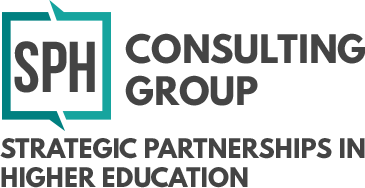Ultimately, it all comes down to higher education leadership answering the question, “What is more important?”
June 7, 2023

Higher education has been going through significant change. After years of steady and, at times, substantial growth in demand, the last twelve years have seen a clear significant change in direction. Between 2011 and 2020, institutions of higher education experienced a 10% decline in the demand for the “product” they offer, the once coveted college degree. The reasons for the decline have been studied extensively and range from, the obvious issues of escalating cost, an aging population with a shrinking college age demographic, to a new recognition of the need for people in the various trade industries that do not require a college degree. Models for learning have also changed. Post-Covid that trend has only continued, with the idea of delivering education through distance or remote online learning gaining strength.
Put another way, higher education has lost more than 2 million students annually. This decline in enrollment has led to something virtually unthinkable prior to 2010; old and respected colleges and universities are being forced to close. However, if you look closer at the data, you also see that not all schools are experiencing a decline in enrollment. Larger schools have actually seen an increase in their overall enrollment. For example, if we examine the 20 largest institutions in the U.S. (by enrollment) we observe that between the same years, student enrollment increased by 8%, and was even greater when considering four year institutions only (+10%) or private institutions only (+22%). So, what does all this mean for colleges and universities who are trying to strategically plan for their future and how do they remain “market relevant” in the evolving environment?
Is there a way for smaller colleges and universities to retain their legacy and continue delivering on their underlying mission? The answers are not easy. Not because there are no options, but because the options are often outside the normal “comfort zone” not only for school boards and executives, but also for the extended campus community.
Unlike other sectors of our society, prior to 2010 the world of higher education functioned in its own unique space. Sometimes referred to as the “Ivory Tower,” these organizations functioned with their own rules of engagement, thinking of themselves as different and unique enterprises, where many of the typical rules that govern business did not apply. It was a place for free-thinking people to go, explore through research and teaching with the mission of providing the world its next generation of leaders across all industries. Following World War II, demand was such that there was little reason to be overly concerned about the economic realities of operating the higher education business.
The demand was there, growth was required, and on a relative basis all institutions could increase in size and charge what they needed to charge, and there would be a customer or client who valued their brand and was willing to pay for the product. Post college, the market was demanding that the workforce obtain a college degree in order to secure the best paying jobs and have the greatest opportunity for a better financial future. Unlike other industries, higher education was far less affected by supply and demand, business and economic cycles, changes in the regulatory environment, and even the evolution of technology. In fact, if anything, the rapid evolution of information technology (IT) helped to spur the further demand for trained personnel, which in turn helped colleges and universities as the training ground for this new generation of engineers, scientists, and IT personnel.
Unlike higher education, other industries were unable to escape the reality of a changing and evolving environment. New for more sophisticated technology, the increasing cost of materials, a changing demand for services, increasing regulatory burden, and much more – all impacting virtually every industry from healthcare to transportation to communications to banking and finance. These other industries learned that the market demanded they reconsider how they operate and be open to modifying how they view themselves and retain their relevance. The need to look ahead, strategically plan, flex their size, adjust their operations, and view new partnerships and relationships, all became the basic tools for how they operate.
However, the uninhibited use of these fundamental operating and financial tools and principles have been frequently absent from most institutions of higher education. Many traditional institutes of higher education, in particular private institutions, have functioned primarily as standalone entities, without significant operational or financial ties with others. They have therefore found themselves competing for the same market, expending funds to build similar programs and facilities, and supporting what often is duplicative infrastructure. There has been a general reluctance to explore the development of creative strategic partnerships and relationships.
Included in the idea of considering strategic relationships is a willingness to consider and, as needed, embrace the idea of merging with and/or merging into other compatible organizations. If it is to be used in a meaningful way, consideration of strategic partnerships requires an openness to letting go of some control and accepting that real change is going to be difficult and likely will take the organization and its leaders out of their usual comfort zones. It also means that traditional ways of looking at challenges and how they might be truly mitigated need to be on the table.
Consideration of strategic partnerships requires setting aside egos and a higher degree of transparency then the culture of the organization may be accustomed to. This is perhaps the greatest challenge to considering strategic partnerships in higher education. The willingness of most senior leaders to relinquish some degree of control and accept appropriate risks to their own positions. These concepts are not new to other industries, and it is in fact how organizations in health care, communications, and the like have managed to evolve and remain successful.
Ultimately, it all comes down to leadership answering the question, “What is more important?” Is it retaining our name, traditions, and independence just because this is how we have always operated? Or can we see ourselves in a new way, relinquishing some degree of control and finding new ways of being, in order to preserve our legacy and, even more importantly, create new legacies that meet the realities of today’s marketplace?
To learn more about SPH Consulting Group and how we can help your organization, contact office@sphconsultinggroup.com.
Writer: Richard Katzman, Senior Consultant, SPH Consulting Group.
